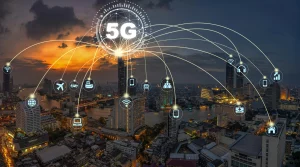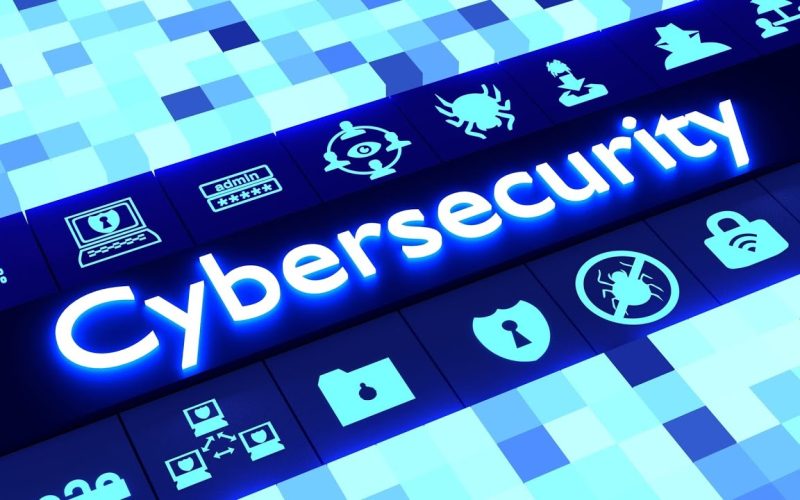The Internet of Things (IoT) has transformed the digital landscape, connecting billions of devices across homes, cities, industries, and beyond. However, as IoT adoption accelerates, so does the risk of cyber threats. In 2024, with over 21 billion IoT devices projected globally, the focus on cybersecurity is more critical than ever. This article explores the challenges, technological advancements, strategies, and future trends in securing IoT systems, alongside real-world examples and benefits.
1. The Growth of IoT and Its Cybersecurity Implications

Expansion of IoT Devices
IoT connects devices like smart refrigerators, wearable health monitors, autonomous vehicles, and industrial sensors to the internet, enabling seamless data sharing. According to forecasts, IoT connections are set to reach 83 billion by 2024, driving a market valuation of $1 trillion.
Increased Attack Surface
However, this connectivity creates an expanded attack surface for hackers. Many IoT devices lack robust default security measures, exposing vulnerabilities that can be exploited through outdated firmware, weak access controls, or insecure network configurations.
Example: Smart City Risks
Smart cities are prime examples of IoT integration, where systems like traffic management, energy grids, and public safety are interconnected. While efficient, such networks are vulnerable to large-scale disruptions if a single device is compromised.
2. Emerging Threats in IoT Ecosystems
AI-Driven Attacks
Hackers are leveraging AI-powered botnets to conduct Distributed Denial of Service (DDoS) attacks and deepfake technology to bypass biometric security. These sophisticated threats are harder to detect and neutralize compared to traditional attacks.
Supply Chain Exploits
IoT ecosystems rely heavily on supply chains for device components and software updates. Weak links in this chain can become entry points for cybercriminals, leading to widespread breaches.
Case Study: Mirai Botnet
The Mirai botnet attack in 2016 infected IoT devices like cameras and routers to execute one of the largest DDoS attacks ever recorded, disrupting major websites globally. This highlighted the need for robust IoT security.
3. Technological Advancements Enhancing IoT Security
AI and Machine Learning
AI and ML are pivotal in detecting anomalies and predicting potential threats within IoT networks. For example, AI-enabled systems can monitor traffic patterns to identify and mitigate breaches in real time.
Blockchain Technology
Blockchain’s decentralized ledger secures IoT transactions by ensuring data integrity and preventing unauthorized access. This approach is particularly beneficial in sectors like healthcare and finance, where data sensitivity is paramount.
Edge Computing
By processing data closer to the source, edge computing minimizes latency and reduces reliance on central systems, enhancing security for real-time IoT applications like autonomous vehicles and industrial automation.
4. Challenges of Integrating IoT with Legacy Systems

Compatibility Issues
Legacy systems were not designed to interact with modern IoT devices, leading to compatibility issues. For example, integrating IoT sensors into older industrial machinery may expose vulnerabilities that attackers can exploit.
Operational Risks
Industries using IoT for predictive maintenance or supply chain optimization may face operational halts due to cyberattacks, highlighting the importance of thorough security assessments before deployment.
5. Advanced Security Practices for IoT
Encryption and Regular Updates
Encryption ensures data security during transmission between devices. Regular firmware updates patch vulnerabilities, preventing attackers from exploiting outdated software.
Network Segmentation
Separating IoT devices into smaller network segments limits the spread of breaches, ensuring that a compromised device doesn’t jeopardize the entire system.
Access Control and Authentication
Multi-factor authentication (MFA) and secure device access protocols are now standard in IoT security, safeguarding networks from unauthorized access.
6. Case Studies: IoT Cybersecurity in Action

Healthcare Example
Connected devices like insulin pumps and heart monitors enhance patient care but also pose risks. A 2021 breach demonstrated how poorly secured medical IoT devices could compromise patient safety. Today, healthcare organizations are employing blockchain and AI to safeguard sensitive data.
Industrial IoT (IIoT)
In manufacturing, IoT sensors monitor equipment for predictive maintenance. However, a ransomware attack on a major IIoT platform in 2022 disrupted production for days. This incident underscored the importance of network segmentation and regular updates.
7. Benefits of Strengthened IoT Cybersecurity
Enhanced Trust and Reliability
Secure IoT systems foster consumer trust by ensuring data privacy. This is crucial for smart home devices, where breaches could lead to personal data theft.
Operational Continuity
In industries, robust IoT cybersecurity minimizes downtime caused by cyberattacks, ensuring smooth operations and reducing financial losses.
Innovation Enablement
With advanced security measures in place, organizations can confidently explore innovative IoT applications, driving growth and efficiency.
8. The Role of Regulations and Standards
Global Standards
Countries are introducing IoT-specific regulations to address security gaps. For instance, the EU’s Cybersecurity Act mandates stricter compliance measures for IoT manufacturers.
Corporate Responsibility
Organizations must prioritize cybersecurity by adopting frameworks like the NIST Cybersecurity Framework, which provides guidelines for identifying, protecting, and mitigating cyber risks.
9. Future Trends in IoT Cybersecurity
AI and Blockchain Integration
The convergence of AI and blockchain will enable predictive threat detection and tamper-proof data management, enhancing IoT ecosystem resilience.
IoT Sustainability
Sustainability efforts will drive the adoption of energy-efficient IoT devices. For example, low-power sensors in smart agriculture can optimize resource use while reducing environmental impact.
5G and Beyond

As 5G networks expand, faster and more secure communication between IoT devices will become standard, enabling real-time applications with enhanced protection against cyber threats.
Conclusion
The age of IoT presents unparalleled opportunities for connectivity and innovation but also introduces significant cybersecurity challenges. By embracing advanced technologies like AI, blockchain, and edge computing, and adhering to stringent security practices, organizations can mitigate risks while maximizing IoT’s potential. As the IoT landscape evolves, robust cybersecurity will remain a cornerstone for ensuring trust, reliability, and growth.












